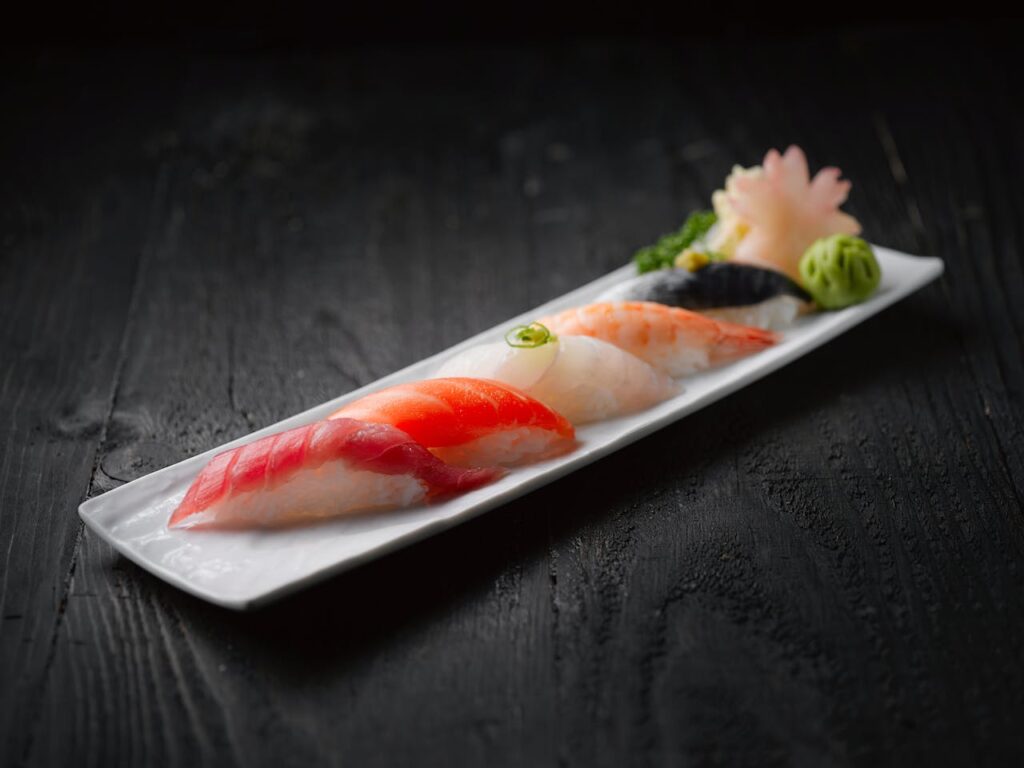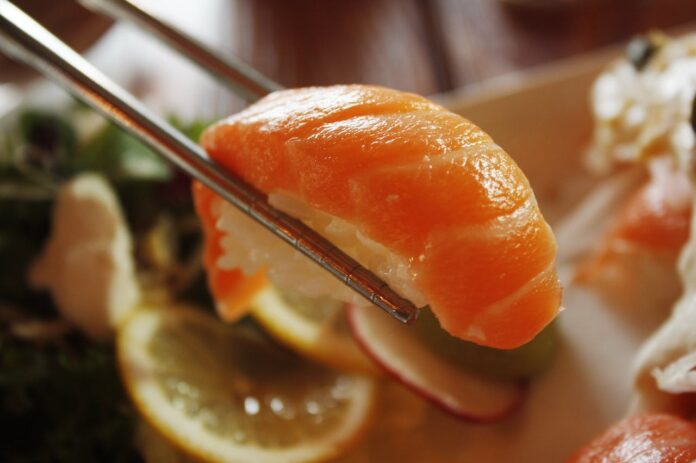Sushi, the beloved delicacy that has taken the world by storm, is often associated with Japan. Its artful presentation, fresh ingredients, and unique flavors make it an unmistakable symbol of Japanese cuisine. But, is sushi truly Japanese, or does it have a more complex and global history? Join us on a journey to uncover the surprising origins and fascinating evolution of sushi, a culinary icon that transcends borders and cultures.
Page Contents
The Birth of Sushi: A Historical Perspective
To understand the true origins of sushi, we must travel back in time to ancient Southeast Asia, where it all began. Over a thousand years ago, fishermen and villagers discovered a clever way to preserve their fish for longer periods without the luxury of modern refrigeration. They combined rice and fish, allowing fermentation to work its magic, resulting in a flavorful and well-preserved food. This early form of sushi is known as “narezushi.”
The Narezushi Revolution
Narezushi may be the earliest form of sushi, but it’s quite different from the bite-sized, elegant morsels we know today. In its original form, narezushi was a long-term preservation method. Fish was wrapped in salted rice and left to ferment for several months. Once the fermentation process was complete, the rice was discarded, and the preserved fish was consumed.
Read Also : The Fascinating History of Pizza
The Evolution of Sushi: Edomae Sushi
Fast forward to Japan’s Edo period (17th to 19th centuries), and you’ll find the beginnings of a sushi style that more closely resembles what we recognize today as sushi. This style, known as Edomae sushi, was born out of necessity and innovation. The inhabitants of Edo (now Tokyo) were looking for quick, tasty meals that could be enjoyed on the go.
Edomae sushi features vinegared rice, known as shari, and toppings that include various fish, seafood, and vegetables. This revolutionized sushi, making it more accessible and convenient for the average person. Nigiri sushi, where a slice of fish is placed atop a small bed of rice, became popular during this era. The use of fresh ingredients and skilled chefs in Edo laid the foundation for the sushi we know and love today.
The Globalization of Sushi
While sushi was evolving in Japan, it was also starting to make its way beyond the island nation’s borders. The late 19th century saw Japanese immigrants introducing sushi to the United States, particularly in California. However, it wasn’t until the mid-20th century that sushi gained real traction on the global culinary scene.
The California Roll: A West Coast Invention
One pivotal moment in sushi’s global journey was the creation of the California roll. In the 1960s, a sushi chef named Ichiro Mashita, who had immigrated to Los Angeles, decided to adapt traditional sushi to suit American tastes. The California roll, with its avocado, crab, and cucumber, was a hit, offering a milder introduction to sushi for those unfamiliar with the more traditional raw fish toppings.
The Sushi Boom
The 1980s and 1990s saw the rapid expansion of sushi restaurants worldwide. Sushi bars became trendy and chic dining destinations. The art of making sushi and the role of the sushi chef, known as an “itamae,” became more highly regarded.
Sushi’s global popularity has continued to grow, with various adaptations and fusions emerging in different countries. This global love affair with sushi has inspired many to try their hand at making it at home, and it has become a staple in many people’s diets, transcending cultural boundaries.

The Role of Cultural Fusion
Sushi’s global spread is not merely about imitation but often involves creative adaptations that incorporate local ingredients and culinary traditions. Sushi has undergone various cultural fusions to cater to diverse palates.
Sashimi, for example, is the Japanese art of eating thinly sliced raw fish. This concept has been embraced in other cuisines as well, such as the Italian crudo and Peruvian ceviche. These dishes feature their unique regional ingredients while maintaining the essence of sashimi.
In Hawaii, the beloved Spam musubi combines the Japanese tradition of onigiri (rice balls) with the American influence of canned Spam. It’s a perfect example of how sushi has adapted to local tastes, incorporating ingredients that reflect the unique cultural blend of Hawaii.
Sushi Beyond Borders
Sushi’s global reach extends to fast-food chains, upscale restaurants, and even fusion food trucks. You can find sushi burritos, sushi donuts, and even sushi burgers in various parts of the world. This creativity demonstrates that sushi isn’t just a dish; it’s an art form and a source of culinary inspiration.
The Role of Technology
Advancements in transportation and technology have played a significant role in making sushi accessible worldwide. Refrigeration and shipping methods allow for the swift delivery of fresh seafood and other ingredients to restaurants far from the ocean. Conveyor belt sushi restaurants, where dishes travel on a conveyor belt, have also made sushi more accessible and interactive for diners.
The Globalization of Ingredients
Sushi’s globalization isn’t limited to its preparation and consumption but extends to the ingredients themselves. Many sushi restaurants around the world use locally sourced fish and produce, reflecting a commitment to sustainability and reducing the carbon footprint.
Additionally, sushi restaurants have embraced the farm-to-table movement, ensuring that their ingredients are ethically sourced and of the highest quality. This practice aligns with the Japanese philosophy of “shun,” which emphasizes using ingredients at their peak freshness.
Sushi and Sustainability
In recent years, concerns about overfishing and environmental sustainability have driven changes in the sushi industry. The global demand for certain fish species, such as bluefin tuna, has led to overfishing and depletion of their populations. As a result, many responsible sushi restaurants are opting for sustainable seafood options and advocating for the protection of threatened marine species.
The Impact of Sushi on Japanese Culture
Sushi’s global journey has not only shaped international cuisine but also impacted Japanese culture and identity. The promotion of Japanese cuisine abroad has led to a deeper appreciation of Japanese traditions, artistry, and craftsmanship.
Sushi chefs worldwide often train rigorously, not only to master the techniques but also to respect the cultural and historical significance of sushi. This cultural exchange fosters mutual respect and understanding among people from different backgrounds.
Sushi Diplomacy
Sushi has transcended borders in more ways than one. It has been used as a tool for diplomacy and international relations. Japanese leaders have often served sushi to foreign dignitaries, turning it into a symbol of hospitality and diplomacy. In some cases, it has helped foster positive international relationships.
Sushi in Popular Culture
Sushi has become a global pop culture phenomenon, appearing in books, movies, and music. It’s celebrated in various forms, from the lighthearted antics of the sushi conveyor belt scene in the film “Mr. Bean’s Holiday” to the thrilling, action-packed sushi showdowns in the “Yakuza” video game series. This culinary icon’s influence on popular culture is undeniable and far-reaching.
Read Also : Exploring the Culinary Wonders of India
Conclusion: The Global Legacy of Sushi
Sushi’s journey from humble beginnings as a preservation method in ancient Southeast Asia to its status as a globally recognized culinary icon is a testament to the power of cultural exchange and adaptation. While it may have originated in Japan, sushi’s global appeal and evolution demonstrate how it transcends borders and brings people together.
Sushi’s ability to adapt and incorporate diverse influences has made it more than just a dish—it’s a symbol of cultural fusion, creativity, and sustainability. As sushi continues to evolve and adapt to new environments, it reinforces the idea that our world is interconnected, and that sharing and celebrating our cultural differences can be as beautiful and delicious as a perfectly crafted sushi roll. So, the next time you enjoy a piece of sushi, remember that it’s more than just a meal; it’s a celebration of the global journey of food and culture.


